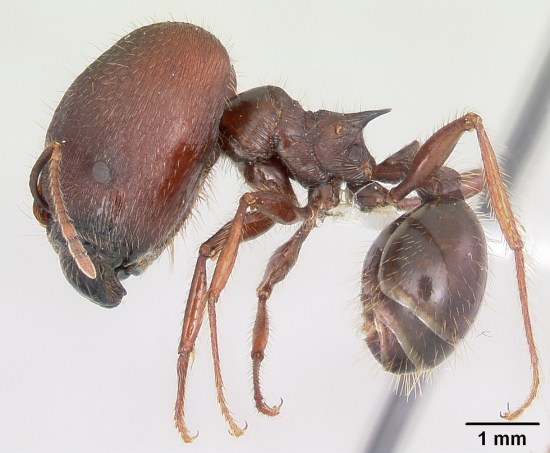Scientists Induce Ant “Supersoldiers,” Discover Clues to Their Evolutionary History
Of the some 1,100 species inside the Pheidole ant genus, most have colonies consisting of two castes: Workers and soldiers. However, about eight species have a third caste called supermajors or supersoldier ants. Unlike their sisters, these ants have enormous heads and mandibles many times larger than the average soldier. When scientists found supersoldier ants amongst Pheidole collected in New York — where supersoldier ants had never been seen before — it was obvious that something strange was at work.
While supersoldier ants have an imposing appearance, to say the least, they serve a distinct purpose for the few species that produce them. Pheidole rhea, for instance, use the enlarged heads of their supersoldier sisters to block tunnels during army ant raids. The enlarged (some might say “horrifying“) mandibles of the supersoldier also come in handy for breaking seeds harvested by worker ants.
With this utilization of supersoldiers, and their appearance spread out so thinly across so diverse a genus, it had been suggested that the specialized caste had evolved in parallel fashion across the genus. The sudden appearance of New York supersoldiers suggested something different.
Unfortunately, the New York supersoldiers were killed by other ants before their behavior could be studied. Lacking these, Ehab Abouheif from McGill University turned to naturally occuring supersoldier larvae to study. Normally, larvae develop into different castes based on the presence of certain hormones. These act like chemical switches that change the course of larvae development, eventually producing workers, soldiers, queens, or supersoldiers.
Think of the Zerg larvae; depending on the commands given to them, they can develop into distinctly different adults.
In the lab, Abouheif’s team applied an artificial “juvenile hormone” to the larvae. In the presence of this hormone, the larvae eventually developed into a big-headed supersoldier. In their research, the team successfully used hormones from Pheidole ants that don’t produce supersoldiers naturally on larvae from ants which do. The team was also able to induce supersoldiers from larvae which normally would not develop supersoldiers.
This would suggest that the supersoldier caste developed very early on in the history of Pheidole ants. While some species have retained the ability to produce them, the potential for supersoldiers could exist in most, if not all, Pheidole ants in a dormant state. If true, it could mean that the bizarre New York ants were a case of atavsim — or an accidental, ancestral throwback like chicken teeth, snake legs, and human tails.
Interestingly, Abouheif’s study notes that although the potential for supersoldiers appears to be present, the ants are not utilized in the same way across the genus. Discover quotes Abouheif as saying:
“The ancestral potential has been locked in place for 35-60 million years, but when it comes back, it comes back really raw. The supersoldiers in P.obtusospinosa aren’t like the ones in P.rhea. There are differences in their behaviour and the way they’re used. It’s an interesting mix of retention and novelty. In the paper, we emphasise the sameness, but it’s actually a creative force too.”
The research is certainly a fascinating look at the development of these incredible creatures, as well as the powers that govern evolution. But, perhaps more importantly, it has introduced the world to the horrific world of supersoldier ants. You’re welcome.
(via Alexander Wild, Discover, Live Science, image via AntWeb)
- Check out this giant weta
- This is a toad with a worm in its eye
- Here’s how a cone snail eats things
- How the world’s largest spiders have sex
Have a tip we should know? tips@themarysue.com
